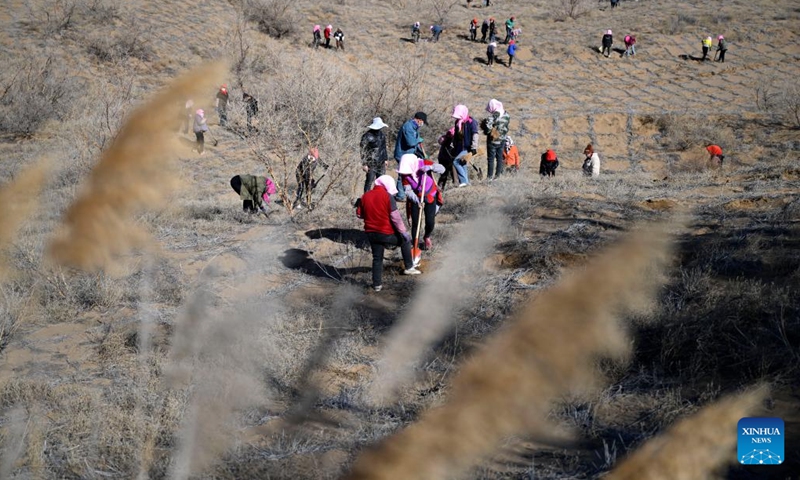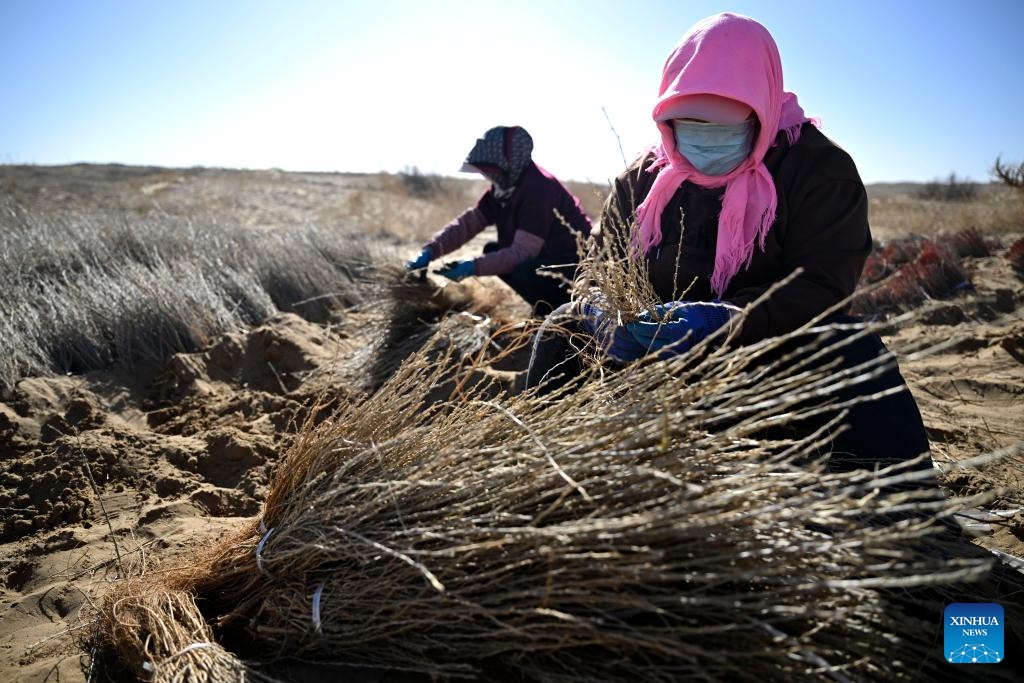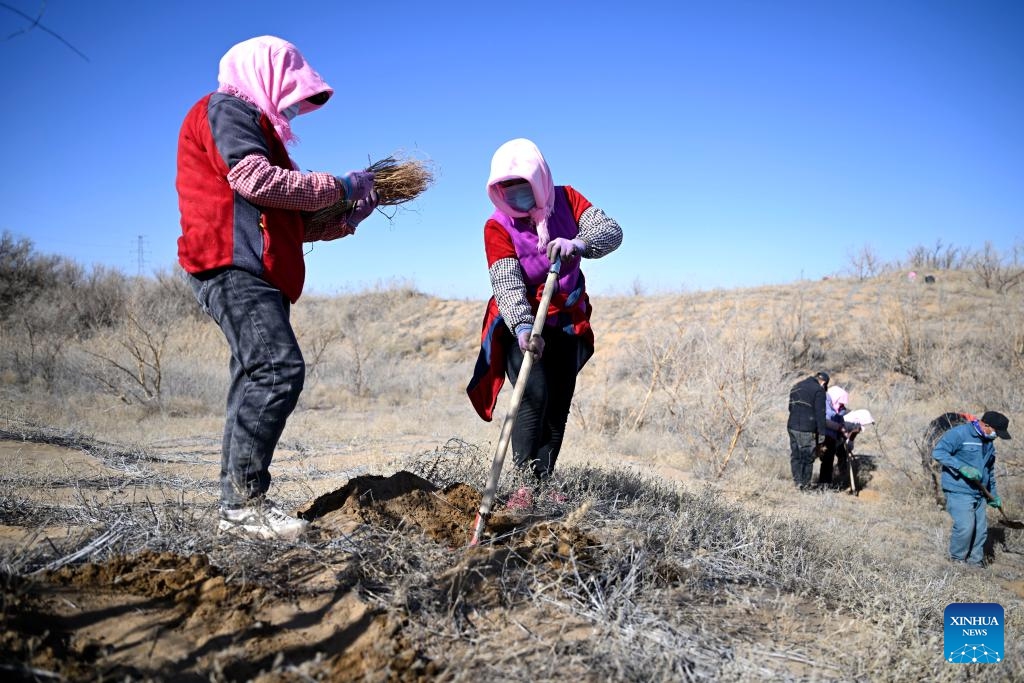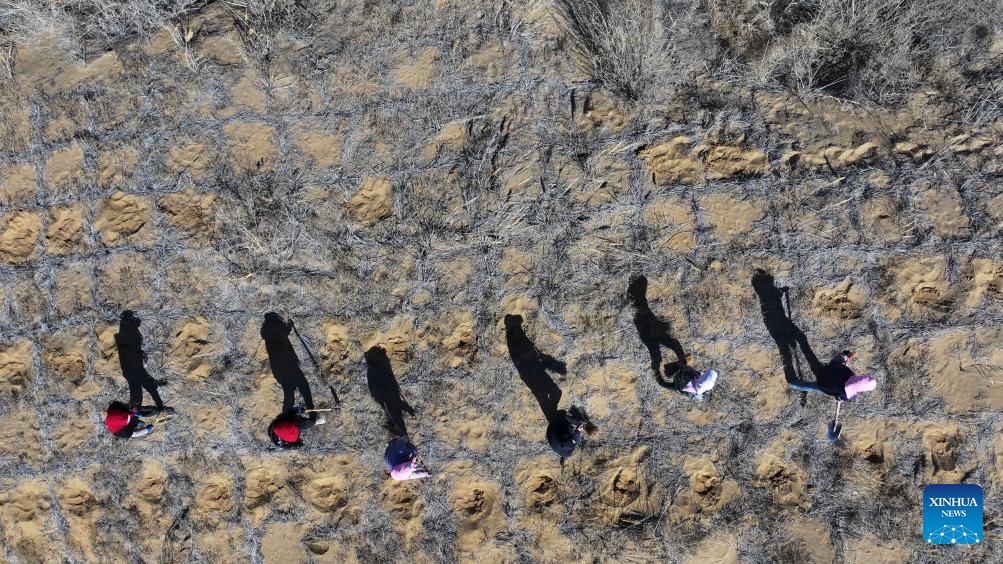
Workers plant Caragana seedlings at Baijitan national nature reserve of Lingwu, northwest China's Ningxia Hui Autonomous Region, March 19, 2024. On the southwest edge of the Maowusu Desert, there lies a 60-km-long and 30-km-wide oasis. The verdure, which blocks windblown dust in Maowusu, has been working in fighting desertification.(Photo: Xinhua)

Workers process Caragana seedlings to be planted at Baijitan national nature reserve of Lingwu, northwest China's Ningxia Hui Autonomous Region, March 19, 2024. On the southwest edge of the Maowusu Desert, there lies a 60-km-long and 30-km-wide oasis. The verdure, which blocks windblown dust in Maowusu, has been working in fighting desertification. Within the green belt is the Baijitan national nature reserve of Lingwu City. (Photo: Xinhua)

Workers plant Caragana seedlings at Baijitan national nature reserve of Lingwu, northwest China's Ningxia Hui Autonomous Region, March 19, 2024. On the southwest edge of the Maowusu Desert, there lies a 60-km-long and 30-km-wide oasis. The verdure, which blocks windblown dust in Maowusu, has been working in fighting desertification. Within the green belt is the Baijitan national nature reserve of Lingwu City. (Photo: Xinhua)

An aerial drone photo taken on March 19, 2024 shows workers planting Caragana seedlings at Baijitan national nature reserve of Lingwu, northwest China's Ningxia Hui Autonomous Region. On the southwest edge of the Maowusu Desert, there lies a 60-km-long and 30-km-wide oasis. The verdure, which blocks windblown dust in Maowusu, has been working in fighting desertification. Within the green belt is the Baijitan national nature reserve of Lingwu City. (Photo: Xinhua)
